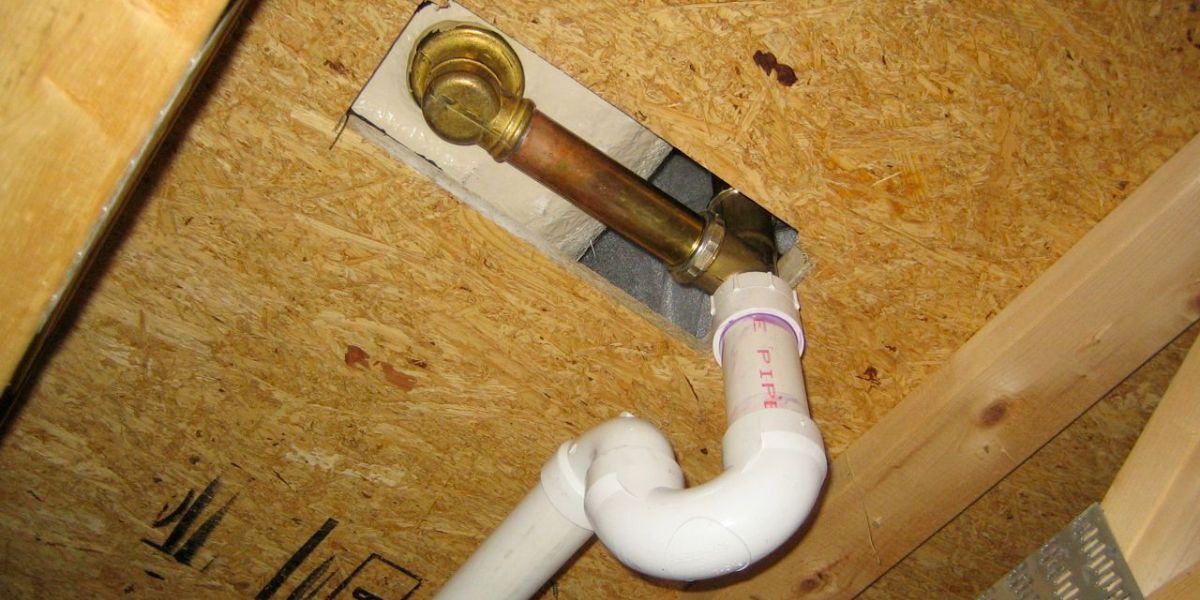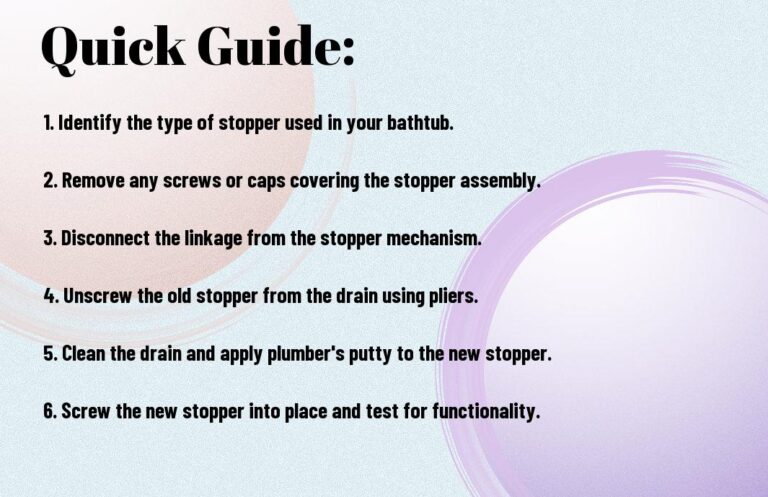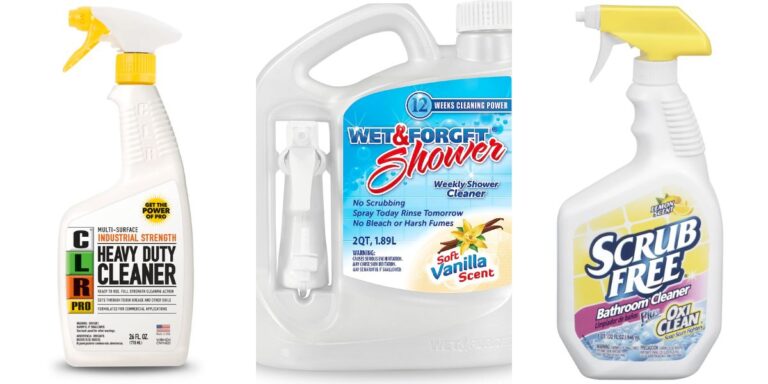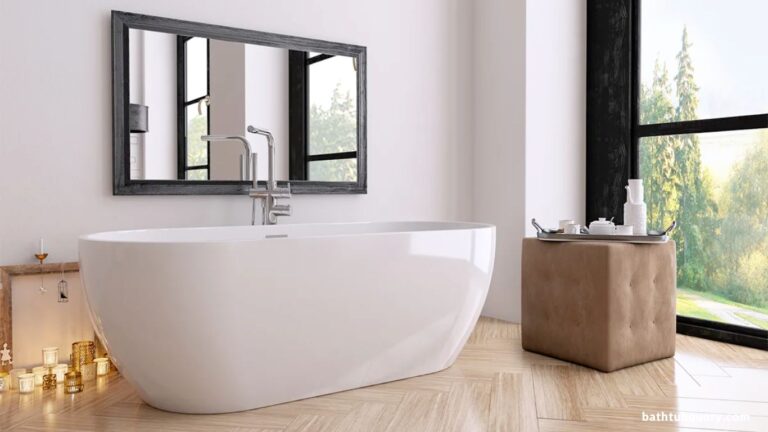Do Bathtub Drains Have Traps?
If you’ve ever taken a relaxing bath, you’ve likely never thought twice about how the water empties out of the tub. But that drain actually has an important plumbing feature – the humble bathtub trap.
Traps play a critical role in bath drainage systems, though they often go unnoticed. In this article, we’ll explore the ins and outs of bathtub traps. You’ll learn what they are, why they’re needed, and how to maintain them. Let’s dive in!
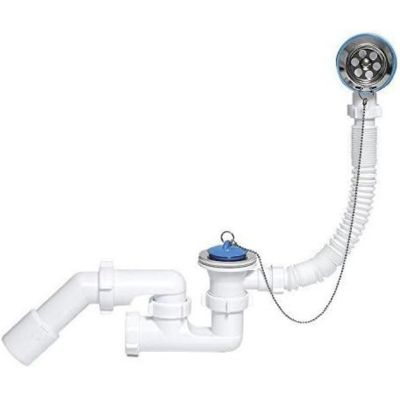
Bathtub Drain Waste P-Trap
| Brand | Aniplast |
| Unit Count | 1 Count |
| Number of Items | 1 |
| Material | stainless steel |
| Controller Type | Push Button |
Do All Bathtub Drains Have Traps?
Yes, bathtub drains do have traps, specifically called p-traps. These are situated underneath the tub and serve a crucial role. Just like in standing showers, the p-trap in your bathtub is designed to trap water, effectively blocking sewer odors from wafting back up into your bathroom.
Make sure you’ve selected the right size of p-trap for your tub.
However, some types of tubs don’t always come with built-in traps:
- Freestanding tubs – Since they aren’t installed against a wall, freestanding tubs often require you to install traps externally after drainage connections are made.
- Older or clawfoot tubs – Many vintage and antique clawfoot tubs have drains that fit standard trap adapters, allowing you to add a trap.
- Slipper tubs – These compact models with one rounded end often need retrofitted traps.
If you aren’t sure, peek under your tub with a flashlight or remove the toe-kick panel to inspect the drain setup. You should see a curved white PVC or metal pipe trap assembly.
But What exactly is a Bathtub Trap?
Simply put, a bathtub trap is a curved section of a drain pipe designed to hold water and prevent odors and sewer gases from coming back up through the drain. The most common type of drain found under tubs is a P-trap, so named because it’s shaped like the letter P.
The P-trap has three main parts:
- The trap arm attaches to the tub’s shoe assembly, angling down to meet the trap.
- The trap bend makes the actual “U” shape that holds water.
- The trap outlet connects to the drain line leading to the main sewer pipes.
When you drain a tub, water flows through the trap arm into the trap bend, which holds a small amount of water even after drainage. This is called the trap seal, and it stops gases from passing back up into the tub. Pretty ingenious plumbing mechanics at work!
Why Are Traps Important for Bathtubs?
There are a few key reasons bathtub traps are critical components:
- Preventing odors – The water held in the trap forms a barrier that keeps sewer gases from venting back up the drain. No one wants smelly bathroom air!
- Blocking debris – Traps stop debris, hair, and other gunk from entering and clogging your drain lines.
- Safety – Gases like methane and hydrogen sulfide can be hazardous. Traps keep these dangers out of your home.
- Plumbing codes – Most municipalities require traps as part of their plumbing standards for health and sanitation.
So in short, bathtub traps keep your bathing experience safe and pleasant!
Signs You May Be Missing a Trap
Some signs your bathtub drain is trap-less:
- Sewer gas smell – One of the first red flags is getting whiffs of rotten egg or methane odors from the drain. This means gases are venting back inside.
- Gurgling sounds – When water goes down a drain lacking a trap, it may make loud gurgles or burbling sounds.
- Debris collecting – Without a trap, chunks of hair and soap can back up into the tub from the drain.
If your drain exhibits these symptoms, it definitely needs a proper tub trap installed. Leaving it trap-less risks unhealthy sewer gas accumulation and clogged pipes.
Bathtub Trap FAQs
How often should tub traps be cleaned?
Aim to clean the trap inlet at least every 3-6 months. Do it more frequently if you notice slow drains or see lots of hair buildup.
Can I install a trap myself or call a plumber?
If you’re handy with plumbing, DIY trap installation is possible. But for many, hiring a pro ensures it’s done correctly.
What causes trap seals to dry out?
Infrequent tub use, evaporation, and repetitively small volumes of water flowing through the trap can all lead to dried out seals.
How do I prevent trap siphonage?
An exposed or undersized venting system can accidentally siphon all water out of the trap. Proper venting prevents this.
In Conclusion
As you can see, there’s more to your bathtub drain than meets the eye! Those inconspicuous traps serve an important purpose, and need some occasional TLC. By understanding tub traps, you can make sure yours is working right to provide relaxing, safe baths. If your trap ever does require service, don’t hesitate to call in a professional plumber. They have the skills to get your tub drainage flowing freely again!
See more:
- Can You Change the Drain on a Bathtub?
- Can Mice Come Up The Bathtub Drain?
- How Does a Bathtub Drain Work?

William J. Bullock is a licensed plumber with over 15 years of experience installing and repairing bathtubs. He runs his own plumbing company in Greenville and serves residential and commercial clients. William is dedicated to providing honest, transparent advice to help homeowners make informed decisions about their bathroom renovations.
He has established expertise in selecting bathtubs, planning custom installations, diagnosing issues, and completing repairs. William aims to share practical tips and reliable recommendations based on extensive hands-on work. When he isn’t on a job site, William enjoys spending time with his family and volunteering at local community events. He takes pride in delivering quality service and enjoys helping people upgrade their homes.

